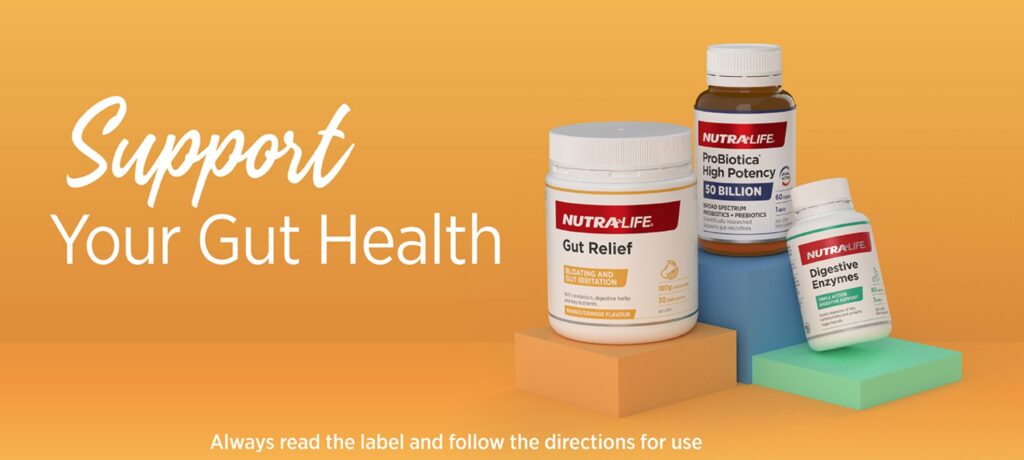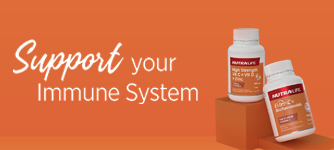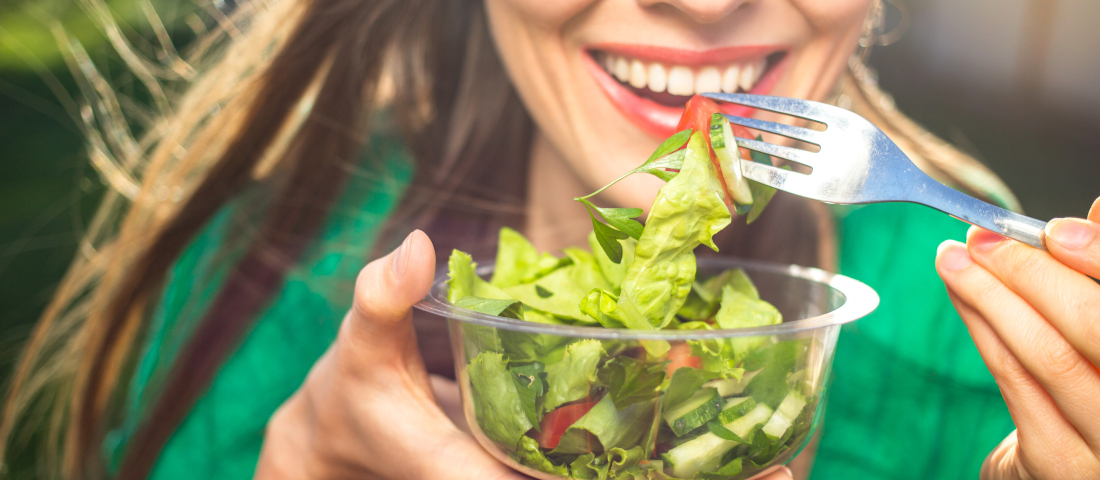About one in seven Australians experiences the unpleasant symptoms of Irritable Bowel Syndrome (IBS).[1] If this is you, or have ever visited your doctor about digestive concerns such as bloating, gas, diarrhoea and constipation, you may have heard of FODMAPs or the Low FODMAP Diet. Research shows that following a low FODMAP diet may be a way to help support a healthy gut.[1]
What are FODMAPs?
FODMAP is an acronym for Fermentable Oligosaccharides, Disaccharides, Monosaccharides and Polyols.[2] These are certain carbohydrates commonly found in foods, which within certain people may not be absorbed properly in the gut and can may uncomfortable symptoms.[2]
The unfriendly high FODMAP foods
The foods that are typically avoided on a FODMAP-friendly diet and that may help support a healthy gut may include:[3],[4]
- Fruits: dried fruit, apples, mango, apricots, nectarine, cherries, pears, peaches, watermelon, plums.
- Vegetables: onions, garlic, artichokes, asparagus, broccoli, Brussels sprouts, cabbage, cauliflower, fennel, leeks, mushrooms.
- Legumes: beans, chickpeas, green peas, lentils, red kidney beans, baked beans, soybeans.
- Wheat: bread, pasta, most breakfast cereals, biscuits and snack products.
- Dairy: cow’s milk, milk powder, yogurt, soft cheeses.
- Sugars: honey, high fructose corn syrup, artificial sweeteners.
The friendly low FODMAP foods
The foods you may enjoy on a low FODMAP diet include:[3],[4]
- Meats and alternatives: Unprocessed meats, fish, seafood, poultry, eggs, firm tofu, and tempeh.
- Nuts: Macadamias, peanuts, pumpkin seeds, walnuts.
- Fruits: blueberries, rockmelon, grapes, kiwi fruit, pineapple, mandarins, oranges, raspberries, strawberries.
- Vegetables: capsicum, bok choy, carrots, celery, cucumbers, eggplant, green beans, lettuce, olives, potatoes, spinach, squash, tomatoes, zucchini.
- Grains: Corn, oats, rice, spelt.
- Dairy and alternatives: lactose-free dairy products, hard cheeses, almond milk, soy milk.
- Sugars: maple syrup, rice malt syrup, table sugar.
Where prebiotics come in
Many high FODMAP foods are also high in prebiotics, which provide food for the healthy bacteria that are found in your gut, known as probiotics.[1] Avoiding prebiotics in the long-term may affect the health of your microbiome (the complex community of microorganisms that live in our bodies and are vital for good health).
Supplementing with a FODMAP-friendly gut relief powder supplement that contains prebiotics, like Nutra-Life Gut Relief Powder, may help relieve indigestion, help soothe the gut lining and relieve gastrointestinal irritation. It may also help maintain healthy digestive function and stimulate the growth of good bacteria in the colon.
Consult your healthcare professional to determine if a low FODMAP diet is suitable for you. A low FODMAP diet should also be conducted under the guidance of a health professional.
Always read the label, use only as directed, if symptoms persist, consult your healthcare practitioner.
[1] https://daa.asn.au/smart-eating-for-you/smart-eating-fast-facts/medical/fodmaps-and-ibs-whats-the-deal/
[2] https://www.monashfodmap.com/about-fodmap-and-ibs/
[3] https://nutritionstripped.com/low-fodmap-diet/
[4] https://www.monashfodmap.com/about-fodmap-and-ibs/high-and-low-fodmap-foods/










